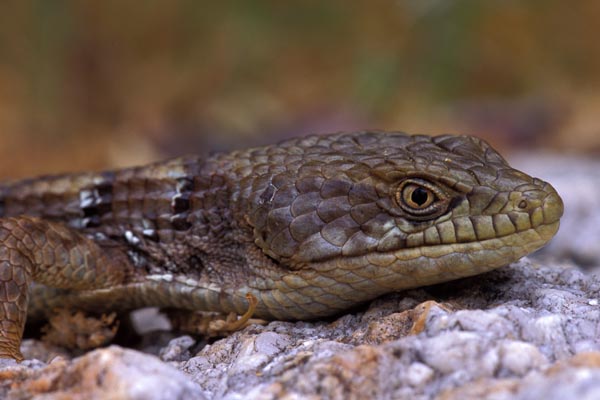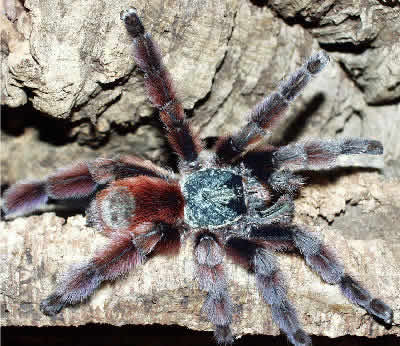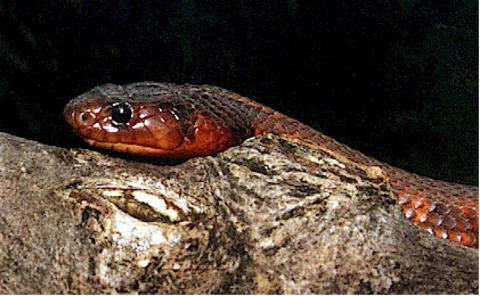By Jessica Peralta
SqueezeOC / (MCT)Looking for a little companion that won't be quite as long-term as a reptile, but still less maintenance than a cat?
Frogs or toads could be for you."
Frogs are relatively easy to care for and can be kept in small enclosures," said
Patrick Powers, manager of
Prehistoric Pets in Fountain Valley, Calif. "
Their diet is relatively simple, as well, consisting mostly of bugs – crickets or worms." Sounds simple enough. Here's more information to help you decide if these amphibians are for you.
FROG VS. TOAD: Although both amphibian, there are many differences between frogs and toads, said
Chris Giacoletti, owner of
Reptile Island in Yorba Linda and Rancho Cucamonga, California.
Frogs' back legs are two times longer then their front legs, he said. Most frogs are aquatic and need a damp environment. But toads can live underground when temperatures reach 110 degrees and then come out when it rains. Most frogs have smooth skin, while some toads have rough skin with glands that excrete toxins when something tries to eat them, Giacoletti said.
Most toads and frogs aren't good pets to hold and play with. Frogs and toads in captivity can live between two and 10 years, depending on the species, Giacoletti said.
COST: Generally $5 to about $20, Giacoletti said. Dart frogs and red-eyed tree frogs start at about $50 each and can go as high as $150. Most toads are generally under $20.
CARE REQUIREMENTS: Depending on the frog's size, a basic set-up requires a 5- to 10-gallon tank, orchid bark for bedding, a shallow water bowl, a live or fake plant and a branch, Giacoletti said. You need to spray frogs down once a day and feed them at least every other day.
Toads have pretty much the same set-up requirements, but don't need trees and branches as much as frogs. If you have a 4-inch frog, you don't need a 60-gallon tank. An amphibian set-up will cost you between $40-$60.
Frogs and toads mainly eat crickets, Giacoletti said. Depending on the frog, you can feed them worms, wax worms and night crawlers. Horned frogs and pixie frogs will also eat mice and rats.
FOR BEGINNERS: The best hands-on frog is a
dumpy frog or
white's tree frog, Giacoletti said. They're really friendly and grow to about 4 to 5 inches. They eat crickets, worms and can even eat baby mice when they get big enough.
You'll need to set up a damp environment with either live trees or branches and fake vines. The frogs need to be sprayed once a day and need a shallow water bowl. They don't require any lighting, but you can give them mild heat if it gets too cool in your house during winter, Giacoletti said. They do best at 75-84 degrees.
Horned frogs make good pets, Giacoletti said. They grow to about 10 inches in diameter. They're not a good handling pet, however.
Pixie frogs are also good beginner pets if you don't mind
not handling them. (
Tiger salamanders, also amphibians, can make good pets, too.)
European green toads and
Egyptian green toads are good beginner toads. They're hardy.
FOR THE MORE EXPERIENCED: Red-eyed tree frogs and
poison dart frogs. Poison dart frogs require more precise temperature and humidity levels, UV lighting and the right amount of food. The frogs do better with live moss and you'll want live plants rather than artificial foliage, Giacoletti said.
MOST POPULAR: Either the
red-eyed tree frogs or the
dumpy tree frogs, Giacoletti said.
Fire-bellied toads are pretty common amphibian pets. Remember to wash your hands after handling these because their toxins are a little higher than other toads, he said.
CAUTIONS: Red leg disease is a common illness among frogs and toads, Giacoletti said. They get this skin disease if they're sitting in their feces too much or in an unsterilized cage. Amphibians absorb a lot through the skin. So if the cage is not clean, they'll get pneumonia, bacteria and fungus, which can easily kill them.
As with reptiles, wash your hands when handling an amphibian, Powers said.


























